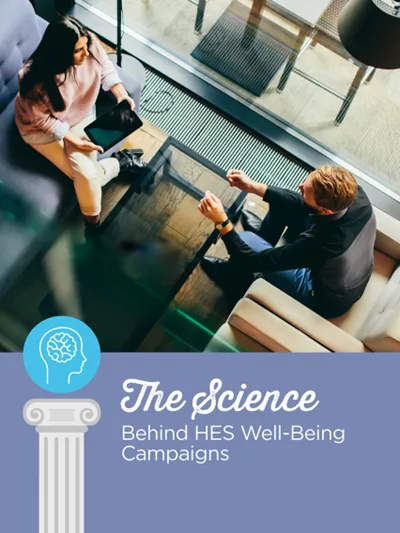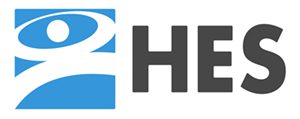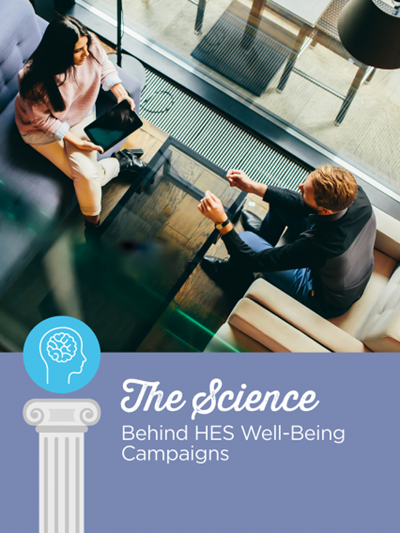
 “More fun than should be allowed at work.”
“More fun than should be allowed at work.”
That’s the motto of Health Enhancement Systems, which has been creating and implementing workplace well-being campaigns worldwide for more than two decades. HES CEO Dean Witherspoon is an expert on wellness at work in 2018 and what lies ahead for companies.
Q: What are well-being campaigns?
A: Campaigns are one component of a full-fledged workplace wellness program. They’re typically 6-12 weeks, designed as individual and/or team challenges focused on one or more health behaviors such as fitness, nutrition, stress management, sleep, financial wellness and healthy weight. At HES, we design our campaigns around themes — game shows, international travel, pirate quests, nostalgia, March Madness —whatever we can do to make participation engaging and fun.
Q: Why go to so much effort? Can’t companies just give employees a goal and an incentive to improve health?
A: They can. And some do. But we found early on that people don’t change health behaviors long-term for money, gift cards or other monetary incentives. It may get your employees’ attention in the short term, but take away the carrot, and the desired behavior stops for all except those who are already motivated to live a healthy lifestyle. So we work hard to create an environment where intrinsic motivation can flourish and employees internalize the behaviors that lead to better health.
 Q: Are there real-world examples of how organizations help employees become intrinsically motivated to improve health?
Q: Are there real-world examples of how organizations help employees become intrinsically motivated to improve health?
A: It’s not as hard as it may seem at first. We know that everyone has certain needs, including being part of a group, contributing to something bigger than themselves and developing competence in work and other areas of life. The HES model takes this into consideration and builds campaigns that are fun and challenging while creating multiple ways for participants to experience social support throughout the program. We’ve detailed our approach in a new white paper: The Science Behind HES Well-Being Campaigns available at our website (HESonine.com). We’ve used these techniques with hundreds of organizations in North America including some top energy, automotive, and healthcare companies.
Q: What’s the overall state of workplace wellness?
A: The industry has taken a big turn in the last five years or so, moving beyond physical health and risk and putting a greater emphasis on total well-being — including mental and emotional fitness, healthy relationships, financial wellness and intellectual and occupational well-being. It’s due, in part, to the recognition that employees have a variety of factors that impact not just their health but quality of work life, satisfaction with work, and productivity. And to attract and retain the best talent, companies want to create an environment where workers feel the organization has their best interests, as well as bottom line profitability, in mind.
Q: For companies looking to get started or revamping their wellness program what are some resources they can access in addition to HES?
A: Michigan is a leading state in terms of well-being vendors and nonprofit organizations. If they’re not already aligned with the Michigan Wellness Council, that’s a first place to start. It’s a low-cost way to learn from individuals and organizations facing some of the same challenges as other Michigan companies. In fact, there’s a half-day conference on May 9th in Kalamazoo (People First: Designing Meaningful Wellbeing Programs) that’s a great education and networking opportunity. (Editor’s note: HES is Midland, Mich.-based.)
Q: Looking ahead, what’s the outlook for workplace well-being generally and HES in particular?
A: HES has enjoyed significant growth in our business, especially in the last five years. Because we’re very specifically focused on well-being campaigns, we’ve developed the tools and expertise that sets us apart from other wellness vendors that typically offer a broader range of services. Our specialty is theme-based web and mobile well-being programs with engaging participant experiences and rich content — campaigns that are challenging, social, fun, and grounded in health behavior change science. We chose early on to become the very best in the world at one thing, and it has turned out to be the right decision for us and our customers.
More broadly, there’s been a rush of startups and a lot of investment in new technologies in the wellness field in the last 8-10 years. Some of those organizations have already fallen by the wayside, but others have done very well and, in many instances, partner with HES to provide the campaign component of their platforms and services. In fact, that’s been the biggest area of growth for us, and we expect that to continue for the foreseeable future.
We believe organizations that figure out how to create very personally tailored well-being interventions and execute them in a way that gets large segments of the employee population to rally around a common goal are going to do very well heading into the end of the decade.
New technology — machine learning and AI (Artificial Intelligence)— will have a role for sure but we’re still quite a way off from it fulfilling its promise.
In the end, achieving optimal well-being will always be more about the environment and support organizations provide for their employees than the latest technology.








